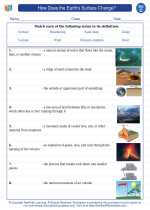How Does the Earth's Surface Change?
The Earth's surface is constantly changing due to natural processes such as weathering, erosion, and deposition. These processes are driven by forces such as water, wind, ice, and gravity. Let's explore how each of these processes contributes to the dynamic nature of the Earth's surface.
Weathering
Weathering is the process by which rocks and minerals are broken down into smaller pieces. There are two main types of weathering: mechanical and chemical. Mechanical weathering occurs when rocks are broken into smaller pieces without changing their chemical composition, while chemical weathering involves the alteration of the chemical makeup of rocks and minerals.
Erosion
Erosion is the movement of weathered material from one place to another. This can be caused by various agents such as water, wind, ice, and gravity. Water erosion, for example, can occur through the action of rivers, waves, and glaciers, while wind erosion can result in the transportation of fine particles over long distances.
Deposition
Deposition is the process by which eroded material is laid down in a new location. This can happen when the energy of the transporting agent (e.g., water or wind) decreases, causing it to drop the sediment it was carrying. Deposition can lead to the formation of various landforms such as deltas, beaches, and sand dunes.
Study Guide
- Define weathering and explain the difference between mechanical and chemical weathering.
- Describe the various agents of erosion and provide examples of how each one contributes to the changing Earth's surface.
- Explain the process of deposition and give examples of landforms that are created as a result of deposition.
- Discuss how human activities can impact the natural processes of weathering, erosion, and deposition, and their effects on the Earth's surface.
By understanding the processes of weathering, erosion, and deposition, we can gain insight into the ever-changing nature of the Earth's surface and the forces that shape our planet's landscapes.
.◂Science Worksheets and Study Guides Third Grade. How Does the Earth's Surface Change?
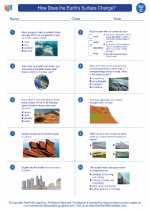
 Worksheet/Answer key
Worksheet/Answer key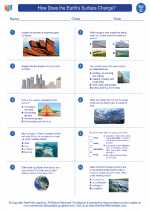
 Vocabulary/Answer key
Vocabulary/Answer key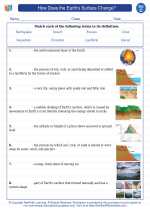
 Vocabulary/Answer key
Vocabulary/Answer key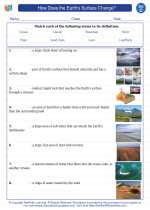
 Vocabulary/Answer key
Vocabulary/Answer key